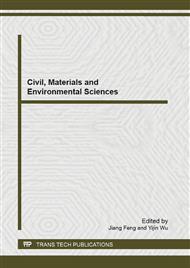p.384
p.388
p.392
p.398
p.404
p.410
p.414
p.420
p.427
Statistical Analysis of the Development Tragedy of Low Carbon Economy of Hi-Tech Industry in Shandong Province
Abstract:
Low carbon economy is the main direction of the future development of China. The hi-tech industry area has the features of tech-intensified, high energy consumption, high pollution, to develop hi-tech industry is good for the transfer from traditional industry to the low carbon economy mode. As a big province of China, it is imperative for Shandong Province to develop the low-carbon economy. Therefore scientific solution on carbon emissions of high-tech industrial area in Shandong province is a problem for government and academic workers to have to face and resolve. This paper analyzes the low-carbon economic situation of high-tech industry in Shandong province, and puts forward some countermeasures for low carbon economy development of high-tech industry in Shandong province.
Info:
Periodical:
Pages:
404-409
Citation:
Online since:
August 2013
Authors:
Price:
Сopyright:
© 2013 Trans Tech Publications Ltd. All Rights Reserved
Share:
Citation:


